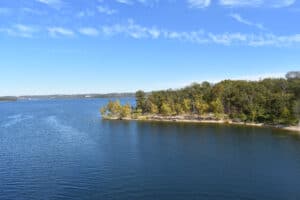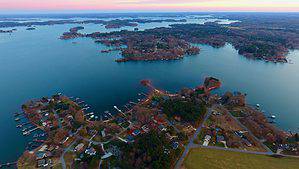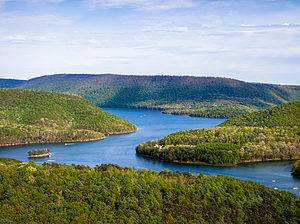When we talk about lakes, we often think about the bodies of water made from inland basins or tectonic movements. While this is true, one of the first thoughts that also come to mind is that lakes are often in average surface elevations. Yet, lakes all differ in elevation. “Elevation” is one of the essential terms in geography, as it tells how high or low a place is.
Most lakes have different characteristics that set them apart, and one of the most common differences among them is surface elevation. Some lakes can be located high up in the mountains, while others can sit on low surfaces, resulting in high water salinity. Although there are only a few low lakes in the world, they are worth noting. Here’s a preview of the ones we will discuss:
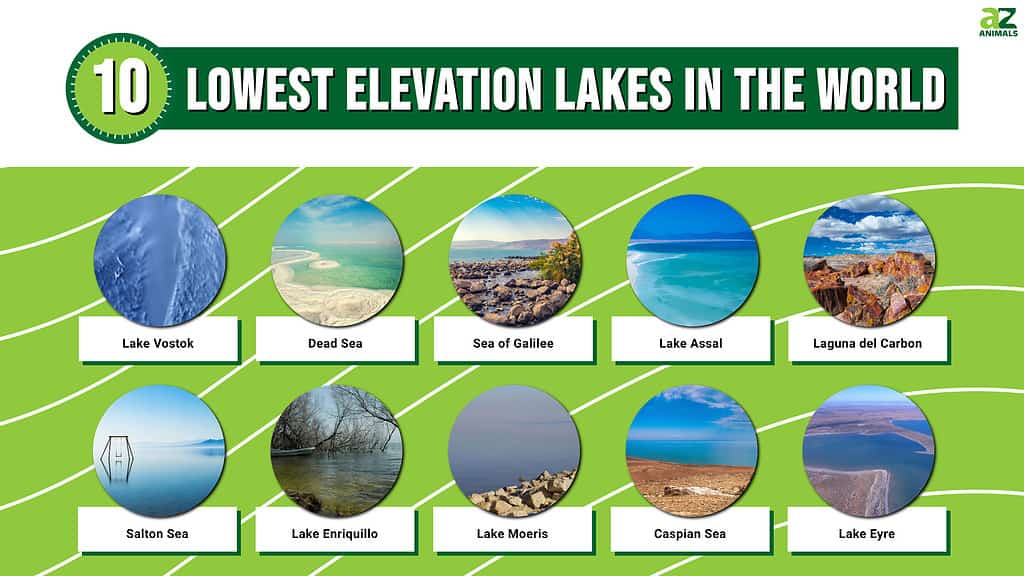
Read on to discover details about the 10 lowest elevation lakes in the world. There are some fascinating facts about them!
The 10 Lowest Elevation Lakes in the World
10. Lake Eyre – 49 feet (15 meters)
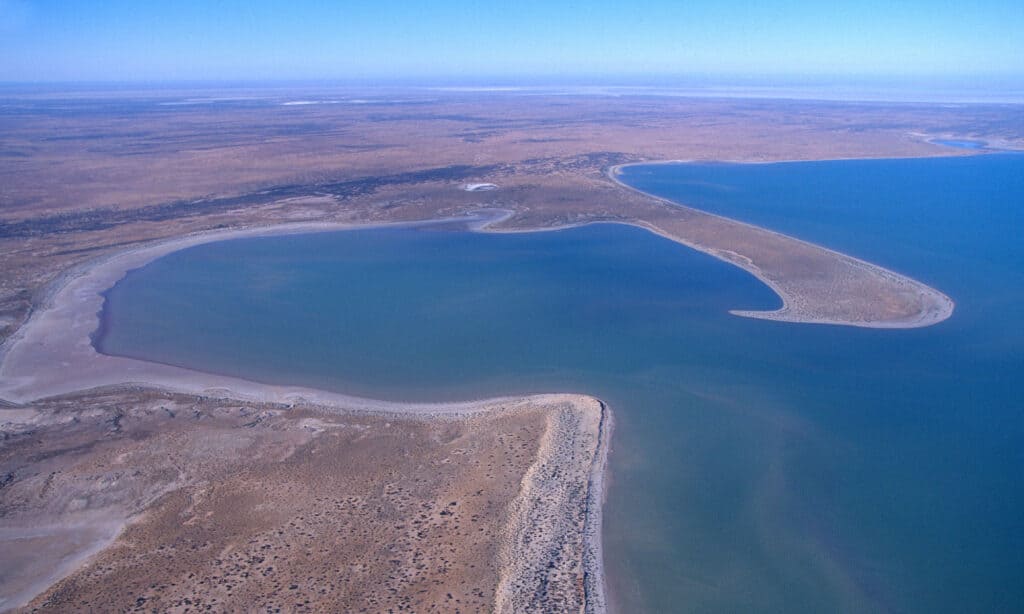
©iStock.com/JohnCarnemolla
Sitting at an elevation of 49 feet or 15 meters below sea level, Lake Eyre in Australia is the world’s 10th lowest lake. With a total area of 4,281 square miles (11,088 square km), Lake Eyre, also known as Kati Thanda–Lake Eyre, is a large salt lake in central South Australia located in the southwestern portion of the Great Artesian Basin. The basin is confined with a surface area of 440,150 square miles (1,140,000 square kilometers) and only intermittent streams for drainage. The lake, mostly dry but occasionally floods, is the lowest place on the Australian continent. When the lake’s shoreline is full, its lowest point is 30 feet or 9 meters below sea level. But when it’s empty, its lowest point can go as low as 49 feet.
Samples from Lake Eyre imply that a 30,000-year-old down fault caused the current saline depression on the Earth’s surface that obstructed a previous outflow to the sea. Water entering the lake now dissipates quickly, and a thin crust of salt has formed on the lakebed’s surface from vaporized water.
9. Caspian Sea – 92 feet (28 meters)
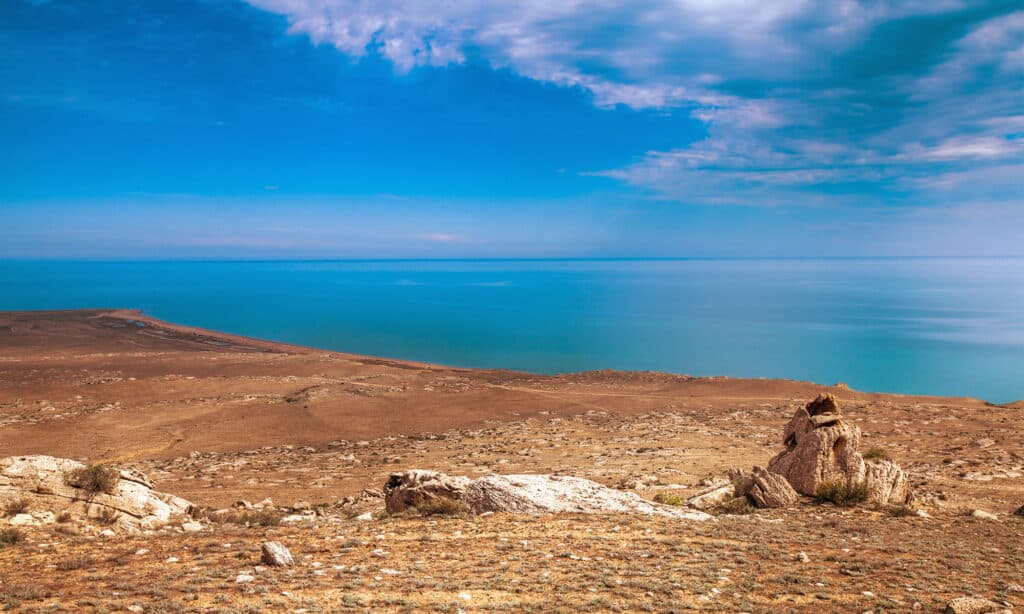
©Marina Khlybova/Shutterstock.com
The Caspian Sea may be the largest lake in the entire world –it is so vast that it is called a sea rather than a lake. But what makes it more unique is that it lies at a shallow surface elevation measuring 92 feet or 28 meters below sea level. Because of its low settlement and being a locked inland basin, its waters are very salty. It is situated at the crossroads of Europe and Asia, bordered by five Eurasian countries, namely Russia on the northwest, Azerbaijan on the west, Iran on the south, Turkmenistan on the southeast, and Kazakhstan on the northeast. It has a surface area of 143,550 square miles (372,000 square kilometers) and 19,000 cubic miles (78,200 cubic kilometers). The lake has a salinity of about 1.2 percent (12 g/l), which is about a third of that of seawater.
8. Lake Moeris – 140 feet (43 meters)
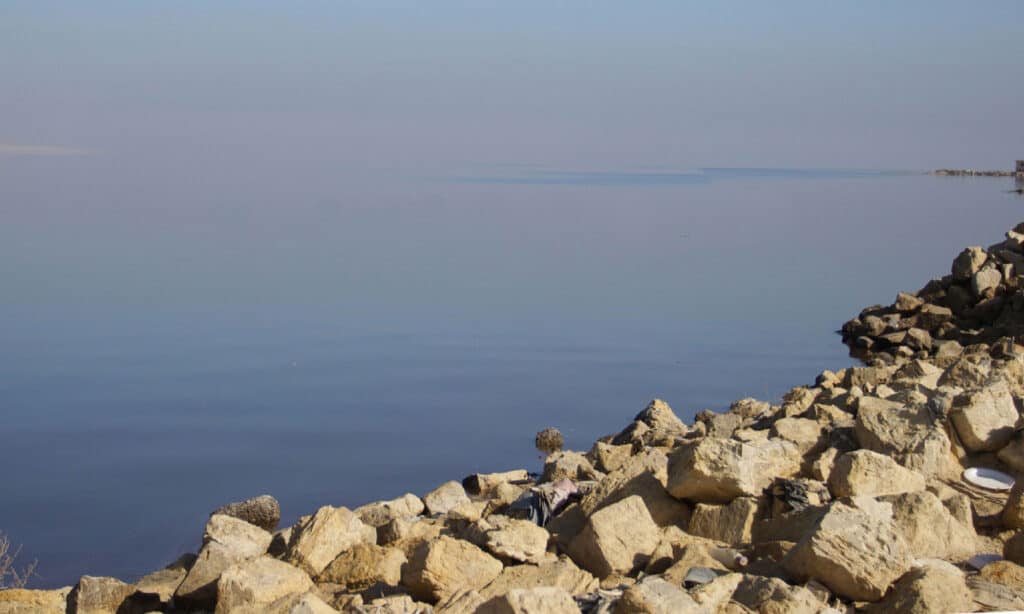
©Bassant Meligy/Shutterstock.com
Lake Moeris sits 140 feet or 43 meters below sea level in Egypt and covers 72 sq mi or 202 sq km. It’s an old lake in Egypt’s Faiyum Oasis, 80 kilometers (50 miles) southwest of Cairo. It was once a freshwater lake, but it now exists as a tinier saltwater lake known as Birket Qarun. Since 2012, the lake and its vicinity have been classified as a Ramsar site, making it a protected area. According to studies on the depression’s sand margin, the lake’s waters were about 120 feet (37 meters) above sea level in early Paleolithic times and likely filled the depression. The lake currently attracts tilapia and other fish from the surrounding area.
7. Lake Enriquillo – 151 feet (46 meters)
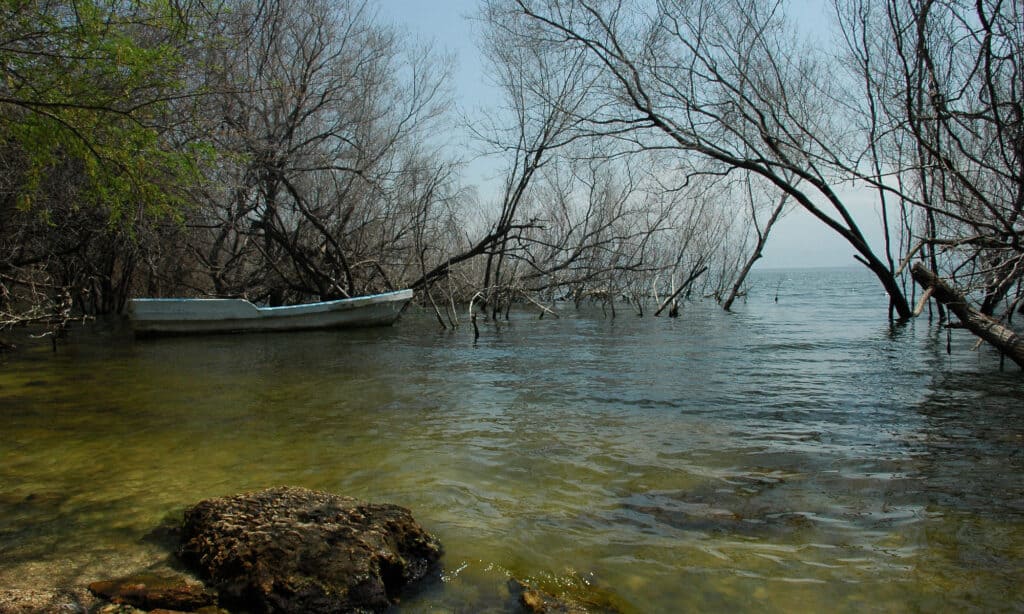
©iStock.com/PatriciaArbaje
The Dominican Republic’s Lake Enriquillo is a hypersaline lake in the country’s southwestern area. The largest lake in the Dominican Republic, Hispaniola, and the entire Caribbean, Lake Enriquillo is also an island country’s lowest point, at 151 feet (46 meters) below sea level. The drainage basin of Lake Enriquillo contains ten minor river systems and encompasses an area of 145 sq mi (375 sq km). There are no outlets for the lake, making its salinity level high. Due to a significant combination of storm-driven rainfall events and the area’s strong evaporation rate, the lake’s salinity can range from 33 parts per thousand (seawater) to over 100 parts per thousand (hypersaline).
6. Salton Sea – 236 feet (69 meters)
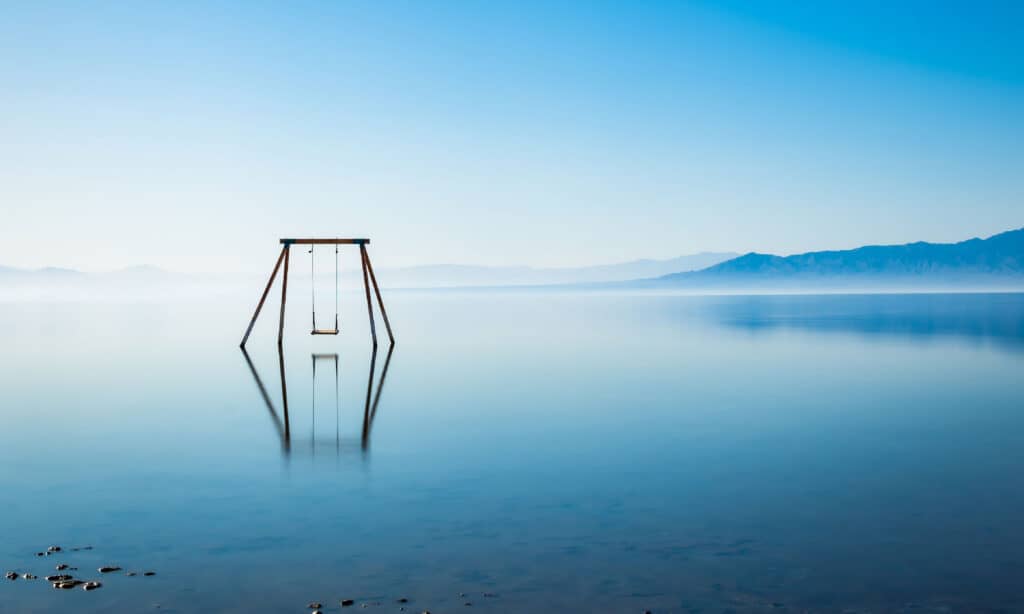
©iStock.com/James Griffiths Photography
The Salton Sea, a shallow, salty, endorheic lake with a surface size of 343 square miles (889 square kilometers), is California’s largest lake. Because it is landlocked, it lacks alternative streams or outflows to drain its waters, and it only loses water to evaporation, resulting in its high salinity. It sits at an elevation of 236 feet or 69 meters below sea level. Salton Lake’s water has a salinity of 44 grams per liter, higher than the Pacific Ocean’s salinity of 35 g/l. The desert pupfish, the only native fish in the water, is an endangered species in the United States. This freshwater fish is well-known for its ability to withstand the rising salt of the Salton Sea. It can withstand salinity levels ranging from freshwater to saltwater twice as salty.
5. Laguna del Carbón – 344 feet (105 meters)
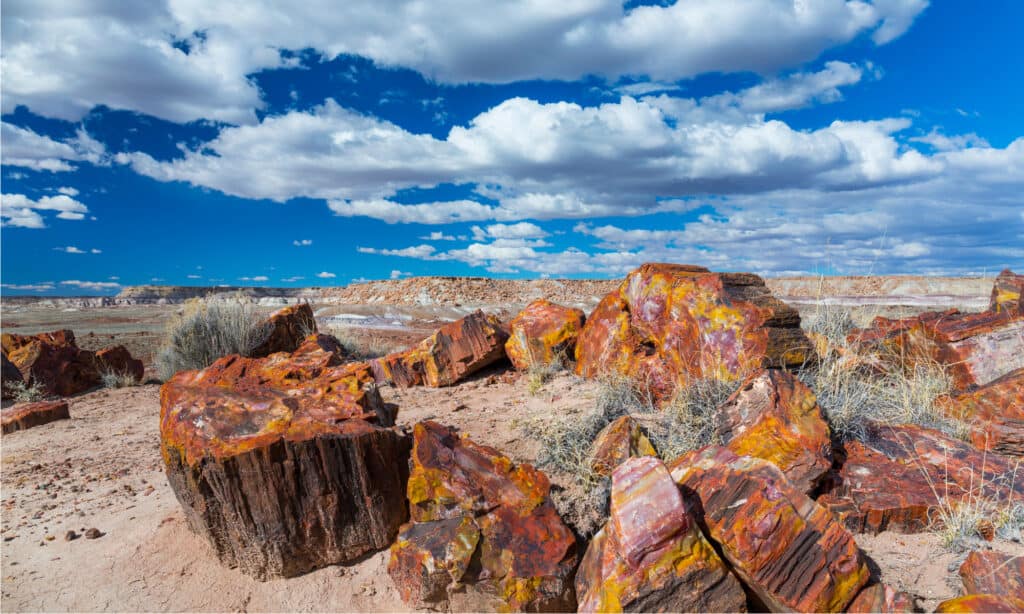
©Juan Carlos Munoz/Shutterstock.com
Laguna del Carbón is an endorheic saline lake located 344 feet (105 meters) below sea level in the Department of Corpen Aike, Santa Cruz Province, Argentina. This surface elevation makes the lake one of the lowest lakes in the world and the lowest lake in South America. Death Valley in California, which measured 282 feet or 86 meters below sea level, was easily beaten by Laguna del Carbón, ranking Argentina as the lowest country in the Americas. Few people know about it, and even fewer visit the lake. Apart from ranking among the lakes with the lowest elevations, the lake also ranks as the seventh lowest point on Earth.
4. Lake Assal – 509 feet (155 meters)
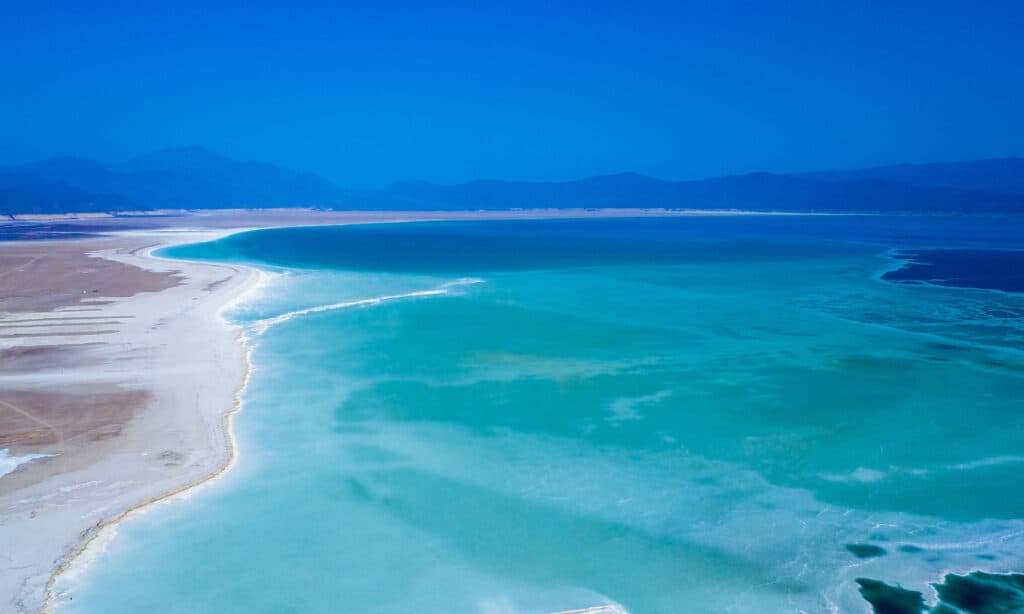
©iStock.com/Dave Primov
Lake Assal, located in Djibouti, is Africa’s lowest lake and lowest point. It’s a crater lake in the middle of Djibouti, in a confined depression near the Great Rift Valley’s northern edge. Because there is no drainage from Lake Assal, its waters are salty. The salt level of its waters is tenfold that of the sea, making it the world’s third most saline body of water, after Don Juan Pond and Gaet’ale Pond, due to tremendous evaporation. The world’s largest salt reservoir, Lake Assal, is mined under four licenses issued in 2002 at the lake’s southeast end.
3. Sea of Galilee – 704 feet (212.2 meters)
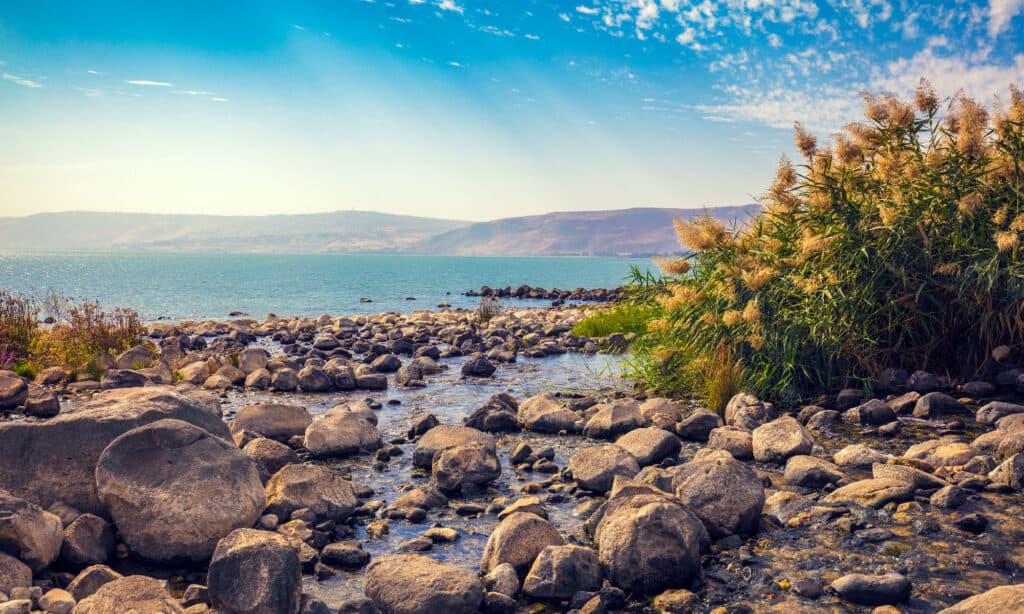
©iStock.com/vvvita
Despite its name, the Sea of Galilee is neither a sea nor a salty body of water. It is a freshwater lake and the third-lowest globally, sitting at an elevation of 704 feet or 212.12 meters below sea level. In Israel, the Jordan River flows through the Sea of Galilee, commonly known as Lake Tiberias. It is known for its biblical connections — its Old Testament title was Sea of Chinnereth, and it was eventually renamed Lake of Gennesaret.
Temperatures around the lake average 57 °F (14 °C) in January, so plants like bananas, dates, citrus fruit, and vegetables have benefited from the lack of freezing temperatures. The fish in the Sea of Galilee are similar to those found in East African lakes. Damselfish, scaleless blennies, mouth breeders, catfish, and barbels are among the fish species.
2. Dead Sea – 1,412 feet (430.5 meters)
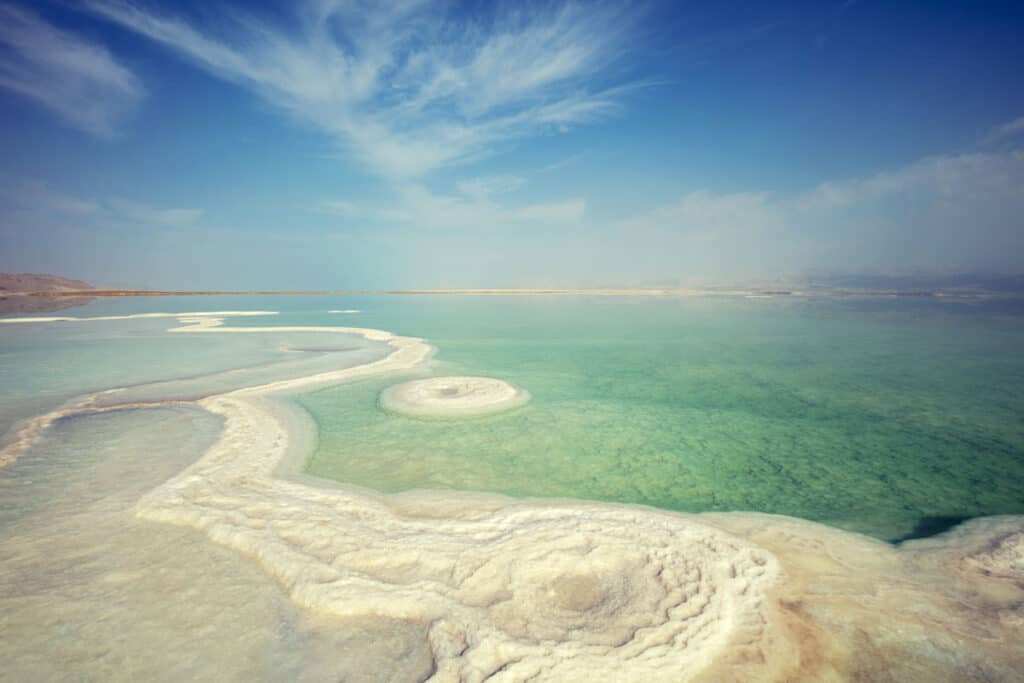
©iStock.com/vvvita
With an elevation of 1,412 feet or 430.5 meters below sea level, the Dead Sea is generally known as the lowest lake in the world. However, it gets beaten by another lake, but we’ll get to that in the next item. The Dead Sea, located between Jordan and Israel, is world-famous for its utterly salty water. Scientifically, the lake’s shallow elevation is behind its high salinity. The Dead Sea’s salt content is produced from land rocks eroded by precipitation. Because carbon dioxide reacts with water to generate a moderate carbonic acid solution, all rainwater contains some acids. However, it provides health benefits such as boosting the immune system and enhancing skin health due to its high salt mineral content.
1. Lake Vostok, – 1,600 feet (500 meters)
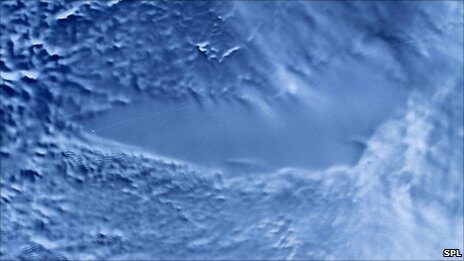
©Goddard Space Flight Center / Public Domain – License
One of the deepest lakes in the world, Lake Vostok also tops the lowest lakes list. It is different from any other lake on this list because it has an external surface elevation that the naked eye cannot see. Lake Vostok in Antarctica is about 2.5 miles (4 kilometers) below the surface and lies 1,600 feet or 500 meters below sea level. Scientists can’t collect enough samples to examine life beneath the ice since they can’t easily penetrate it. Scientists did, however, successfully drill to the lake’s surface in 2012. Studying the samples revealed many new bacterial species in the lake that might suggest a sign of life.
Summary of the 10 Lowest Elevation Lakes in the World
| Rank | Name | Depth below Sea Level |
|---|---|---|
| 1. | Lake Vostok | 49 feet or 15 meters |
| 2. | Dead Sea | 92 feet or 28 meters |
| 3. | Sea of Galilee | 140 feet or 43 meters |
| 4. | Lake Assal | 151 feet or 46 meters |
| 5. | Laguna del Carbon | 236 feet or 69 meters |
| 6. | Salton Sea | 344 feet or 105 meters |
| 7. | Lake Enriquillo | 509 feet or 155 meters |
| 8. | Lake Moeris | 704 feet or 212.2 meters |
| 9. | Caspian Sea | 1,412 feet or 430.5 meters |
| 10. | Lake Eyre | 1600 feet or 488 meters |
The photo featured at the top of this post is © Bassant Meligy/Shutterstock.com
Thank you for reading! Have some feedback for us? Contact the AZ Animals editorial team.




